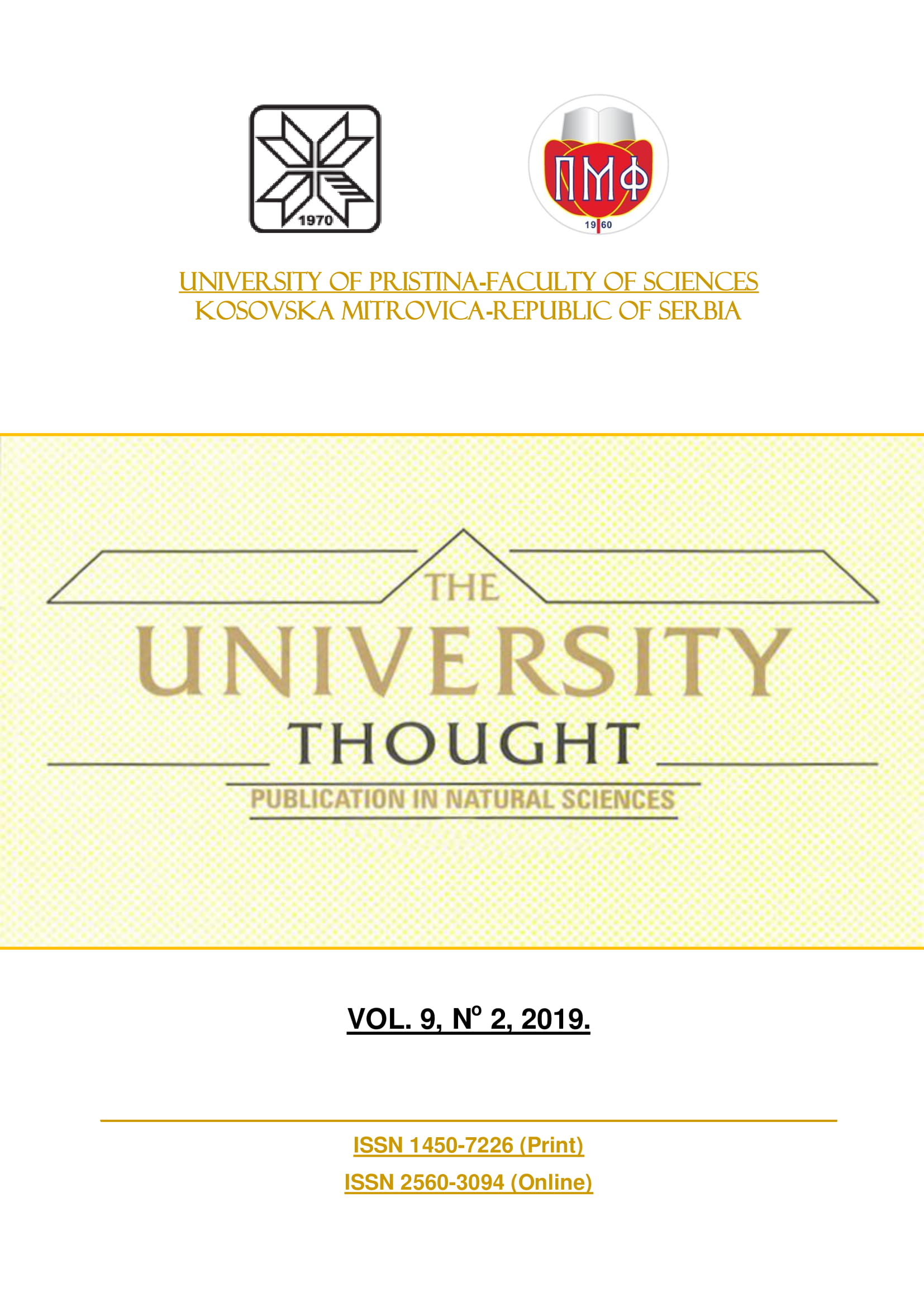SYNTHESIS OF BIODEGRADABLE POLYESTER BASED ON RENEWABLE RESOURCES
Abstract
Due to the growing problem caused by waste plastics, academia and industry, invest great dials of efforts to solve this problem and enable the sustainability of polymeric materials. One way, which can successfully solve this problem, is certainly the synthesis of new polymeric materials based on renewable raw materials. Therefore, in this paper, synthesis of polyester based on ricinoleic acid (as well as the methyl ester of ricinoleic acid) is presented, in order to obtain the polyol of the desired molar masses. The polymerization of the ricinoleic acid was performed in the presence of diethylene glycol, as an initiator, and titanium isopropoxide, as a catalyst. By analyzing the molar masses of the obtained polyesters, it has been confirmed that the control of the molecular weight of the polyricinoleic acid can be successfully accomplished by the addition of a precisely determined amount of diethylene glycol, thus enabling in this way the synthesis of polyols of desired properties. The molecular structure of the synthesized polyols is confirmed by FTIR and NMR spectroscopy. The analysis of the thermal properties showed that the glass transition temperatures of the synthesized polyols range from -70 to -80ºC, which makes it possible to apply these materials in low-temperature applications. The slight increasment of thermal stability is observed, only with the increasment of molecular weight, which was confirmed by TG analysis. The viscosity measurement results confirmed that as the molar weight of synthesized polyester increases, the viscosity of the samples also increases.
References
Cakić, S. M., Ristić, I. S., M.-Cincović, M., Stojiljković, D. T., & B.-Simendić, J. 2016. Preparation and characterization of waterborne polyurethane/silica hybrid dispersions from castor oil polyols obtained by glycolysis poly(ethylene terephthalate) waste. International Journal of Adhesion and Adhesives, 70, pp. 329-341. doi:10.1016/j.ijadhadh.2016.07.010
Krochta, J. M., & De, M. C. L. C. 1996. Biodegradable Polymers from Agricultural Products. In G. Fuller, T. A. McKeon, & D. D. Bills Eds., Agricultural Materials as Renewable Resources, ACS Symposium Series..Washington, DC: American Chemical Society (ACS)., pp. 120-140. 647. doi:10.1021/bk-1996-0647.ch009
Mochizuki, M., Mukai, K., Yamada, K., Ichise, N., Murase, S., & Iwaya, Y. 1997. Structural Effects upon Enzymatic Hydrolysis of Poly(butylene succinate- co -ethylene succinate)s. Macromolecules, 30(24), pp. 7403-7407. doi:10.1021/ma970036k
Ristić, I. S., Bjelović, Z. D., Holló, B., Mészáros, S. K., Budinski-Simendić, J., Lazić, N., & Kićanović, M. 2013. Thermal stability of polyurethane materials based on castor oil as polyol component. Journal of Thermal Analysis and Calorimetry, 111(2), pp. 1083-1091. doi:10.1007/s10973-012-2497-x
Ristić, I. S., Budinski-Simendić, J., Krakovsky, I., Valentova, H., Radičević, R., Cakić, S., & Nikolić, N. 2012. The properties of polyurethane hybrid materials based on castor oil. Materials Chemistry and Physics, 132(1), pp. 74-81. doi:10.1016/j.matchemphys.2011.10.053
Ristić, I. S., Marinović-Cincović, M., Cakić, S. M., Tanasić, L. M., & Budinski-Simendić, J. K. 2013. Synthesis and properties of novel star-shaped polyesters based on l-lactide and castor oil. Polymer Bulletin, 70(6), pp. 1723-1738. doi:10.1007/s00289-013-0917-0
Xu, Y., Petrovic, Z., Das, S., & Wilkes, G. L. 2008. Morphology and properties of thermoplastic polyurethanes with dangling chains in ricinoleate-based soft segments. Polymer, 49(19), pp. 4248-4258. doi:10.1016/j.polymer.2008.07.027
Saunders, J. H., & Frisch, K. C. 1963. Polyurethane chemistry and technology.New York: Interscience. Part I, vol. 16., pp. 5.
Authors retain copyright and grant the journal right of first publication with the work simultaneously licensed under a Creative Commons Attribution License that allows others to share the work with an acknowledgement of the work's authorship and initial publication in this journal.

